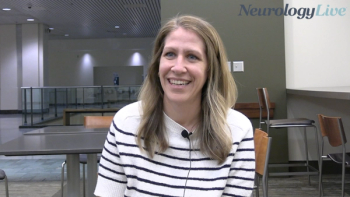
The Research Needed to Bring Gene Therapy to PD
Ignacio Mata, PhD, an associate professor of neurology at the Cleveland Clinic Lerner Institute, discussed the challenges that will need to be overcome to apply gene therapy to a complex neurological disorder like PD.
This is the second part of an interview with Ignacio Mata, PhD. For the first part,
Thus far, gene therapy has shown the most success in treating monogenic disorders. Parkinson disease (PD), on the other hand, which can be linked to a large number of genes in different patients, is not as straightforward for the application of gene therapy.
Despite this apparent difficulty, the modality may still have utility in slowing or stopping disease progression in some patients. CGTLive® spoke with Ignacio Mata, PhD, an associate professor of neurology at the Cleveland Clinic Lerner Institute, to learn more about the challenges of developing gene therapy products in PD and which approaches are most likely to effectively provide benefit to patients.
CGTLive: Can you discuss the potential of cell therapy and/or gene therapy to address unmet needs in PD?
Ignacio Mata, PhD: Well, gene therapy and stem cell therapy—I think those are 2, perhaps, of the less well-known [modalities], but it's something that is going on in parallel to some of the new drugs that are being developed and some of the other things that people are trying. My personal opinion is that I think perhaps we're a little bit farther away from being able to use those yet because there's quite a quite a few barriers.
The first thing is that, as I mentioned, in most cases with PD, the disease is not caused by only 1 gene. There's diseases that are Mendelian where there's one clear causal gene—an example could be Huntington disease, for example, where you would imagine that gene therapy would be an easy target in a sense, and we don't have anything that is working for Huntington disease. So you can imagine a disease like PD, where there's several dozen or so causal genes, and then more than 100 disease variants—it's gonna be very hard to do gene therapy, if you're gonna just target one gene.
There's also the problem of what do you use to put those genes in—viral vectors, no viral vectors? But you know, getting into the brain is a little more complex than getting into any other organ so I think the delivery is also a barrier. As I mentioned, there's also a barrier of when you're supposed to apply these treatments, as well.
I think those are perhaps causing the field to advance much slower than we would like. I think the ones that are ongoing right now are actually not trying to fix a genetic problem (fix the variant or fix the protein that is damaged by the variant). I think the most successful, at least in animal models, has been treating cells with either BDNF or GDNF, which are neurotrophic factors that might help either the neurons that are already there to stay alive basically and continue the production of dopamine. But I think that's one of the ways to do it. They're also trying to make other neurons produce dopamine—so again, PD is caused by a lack of dopamine because dopaminergic neurons seem to be the most vulnerable ones to the disease. So when they disappear, the levels of dopamine go down. So through viral vectors and getting other neurons to produce dopamine is another way that people have tried. Again, some of them have been successful in animal models, especially in rats and mice. But in humans we haven't had any very successful trials, in my mind, just yet. But I think it is something that should be explored because I think there's a big potential for some of these treatments.
But again, even if we have a treatment that works, we're gonna have to figure out when to do it and how to deliver it to make sure that it's effective and it works well for the complex organ that is the human brain.
What specifically is unique or exciting about these approaches compared to other treatment modalities for Parkinson's disease?
This is not unique to PD, but I think building the infrastructure to be able to use either viral and or nonviral vectors that are effective in the brain—that technology still needs to be better developed, I think. I think that's going to open lots of doors, then at least you will be able to figure out what genes you might be able to put and what kind of things you can bring into the brain to help. I think that's going to be a challenge, but it's also a field that is being developed because, again, it can help a lot of different diseases.
So the field is moving forward, as I said, in parallel to a lot of the other treatments, especially drug treatments, more personalized treatments, in terms of biologically targeting some of the genes that are affected in PD. I think as we have more genetic information we're gonna be able to perhaps subdivide patients into 2, 3, or 5 different subgroups of people, depending on what kind of pathways are diminished as part of the disease. For example, it could be the mitochondria or it could be the protein cleaning processes that are the different subtypes; and then perhaps we'll also be able to find the right target for our drugs. I'm a big believer that there is a big chance that some of the things that have been tried in the past might actually not be completely wasteful... I think the problem that we've run into for the past maybe 10 years or so is that we are grouping patients with PD as 1 single group. We know that this is not true—biologically they're very different, even the way that they present the disease. I think that also has been a barrier perhaps in finding things that work for certain subgroups of people. I think that's going to be a big thing. This might be also a barrier for for gene therapy, like finding what kind of genes might work in certain things. That's why I think people are trying to work in these neurotrophic factors that you could imagine might help any biological subtype of the disease. But, I think it's gonna also be important to be able to do these distinctions and perhaps again, using genetics and maybe biomarkers to find the right target cohort for some of these treatments. But I think there's a good potential. I think perhaps the first patients with PD that are going to be able to benefit from this might be those that are caused by 1 single gene like synuclein, LRRK2, or PRKN maybe. But again, we're gonna have to find the right therapy and then the right time to apply this therapy, which in most cases might be many years before they develop the disease if we want to protect those dopaminergic neurons from dying.
Is there anything else you would like to add?
I think again, this is something that hopefully will get to the neurological field sooner rather than later because I think we have, even for the monogenic forms of neurological disorders, like some of the muscular dystrophies or Huntington disease, for example—there are several monogenic neurological disorders that could greatly benefit from these therapies. So hopefully the field keeps advancing and we find ways to deliver the right things to the brain, in the right patients, as well. Hopefully we will be able to start finding some of those treatments that will help us manage the disease progression—not as much the symptoms—but actually be able to slow or stop the disease.
Transcript edited for clarity.
Newsletter
Stay at the forefront of cutting-edge science with CGT—your direct line to expert insights, breakthrough data, and real-time coverage of the latest advancements in cell and gene therapy.












































